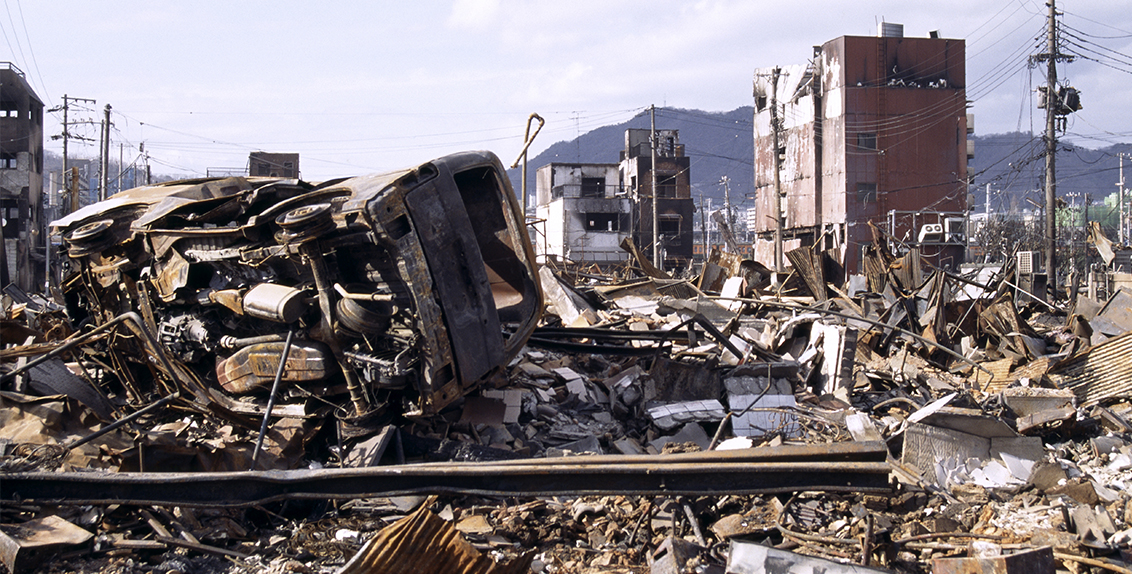
DISASTER RISK REDUCTION
Solutions for mainstreaming disaster risk reduction
Globally, there has been a marked increase in the frequency and intensity of natural as well as man-made disasters. With every new disaster the loss to life and property is increasing. Countless efforts are being made by multitude of agencies like World Bank, UNISDR, UNDP, ADB and country governments, to reduce the impact of disasters.
RMSI provides solutions across the entire spectrum of risk and disaster management cycle encompassing multi-hazard risk assessment and its applications for mitigation, preparedness, response and recovery.
RMSI has developed an innovative framework of ‘Decision support system for disaster risk reduction’ that utilizes the outcomes of multi-hazard risk assessment for activities performed for mitigation, preparedness, response and recovery. This framework has been successfully implemented in several nations of the world and has proven to be an impactful tool for mainstreaming disaster risk reduction.
RMSI has nearly two decades of experience in the disaster risk assessment domain and has worked extensively with state and federal governments and multilateral funding agencies such as the World Bank, UNDP, UNISDR, ADB, FAO amongst others. We have a focused multi disciplinary group comprising civil engineers, meteorologists, seismologists, hydrologists, statisticians, economists and financial analysts.
Solutions
Multi-hazard Risk Assessment
Multi-hazard risk assessment includes hazard model development, exposure development, vulnerability assessment and estimation of structural, social and economic impact of hazards such as earthquakes, tsunamis, cyclone and surge, floods, droughts, landslides, volcanoes, fire, hazardous material release, terrorism, etc. RMSI adopts a participatory approach to risk assessment, thereby encouraging the local government agencies to participate in the risk assessment process. Our offerings include:
- Stakeholder needs assessment
- Development of probabilistic and/or deterministic hazard model
- Exposure and vulnerability assessment of buildings, infrastructure and demographics
- Estimation of structural, social and economic risk
- Development of risk atlas
- Development of risk assessment software platforms
- Institutional capacity building
- Providing inputs for national/state level policy development for mainstreaming DRR
Exposure Data Development
RMSI’s strong knowledge and resource base of GIS provides the necessary basis for this service. RMSI applies an amalgamation of survey, GIS and remote sensing techniques for the development of exposure data. RMSI offers exposure development for the following:
- Demographics
- Buildings & infrastructure
- Agriculture
- Livestock
Mitigation Strategies
Mitigation services include identification of suitable mitigation options, performing their benefit cost analysis, and using that as a basis for development of DRR strategy at regional, national and sub-national levels.
- Feasibility studies
- Future land use planning
- Retrofitting of buildings
- Water harvesting options
- Flood mitigation options
- Development of design criteria
- Benefit cost analysis
- Development of national/sub-national strategy
Response & Recovery
Response and recovery related services involve assessing the impact of a disaster event and using that as a basis to guide response and situation reporting. RMSI offerings include:
- Quick situation & assessment
- Ground truthing
- PDNA (Post Disaster Needs Assessment)
- Evacuation planning
- Shelter needs assessment
- Development of Decision Support System (DSS)
Catastrophic Risk Financing
RMSI applies its CAT modeling framework to support the activities under catastrophic risk financing in the following areas:
- Ex-Ante funding
- Insurance pools
- Parametric insurance
- Insurance impact scenario
Institutional Training and Capacity Building
RMSI domain experts provide training in the following areas:
- Risk Assessment
- Application of risk assessment for mitigation, preparedness, response and recovery
- Use of GIS for DRR
- Use of risk assessment software
